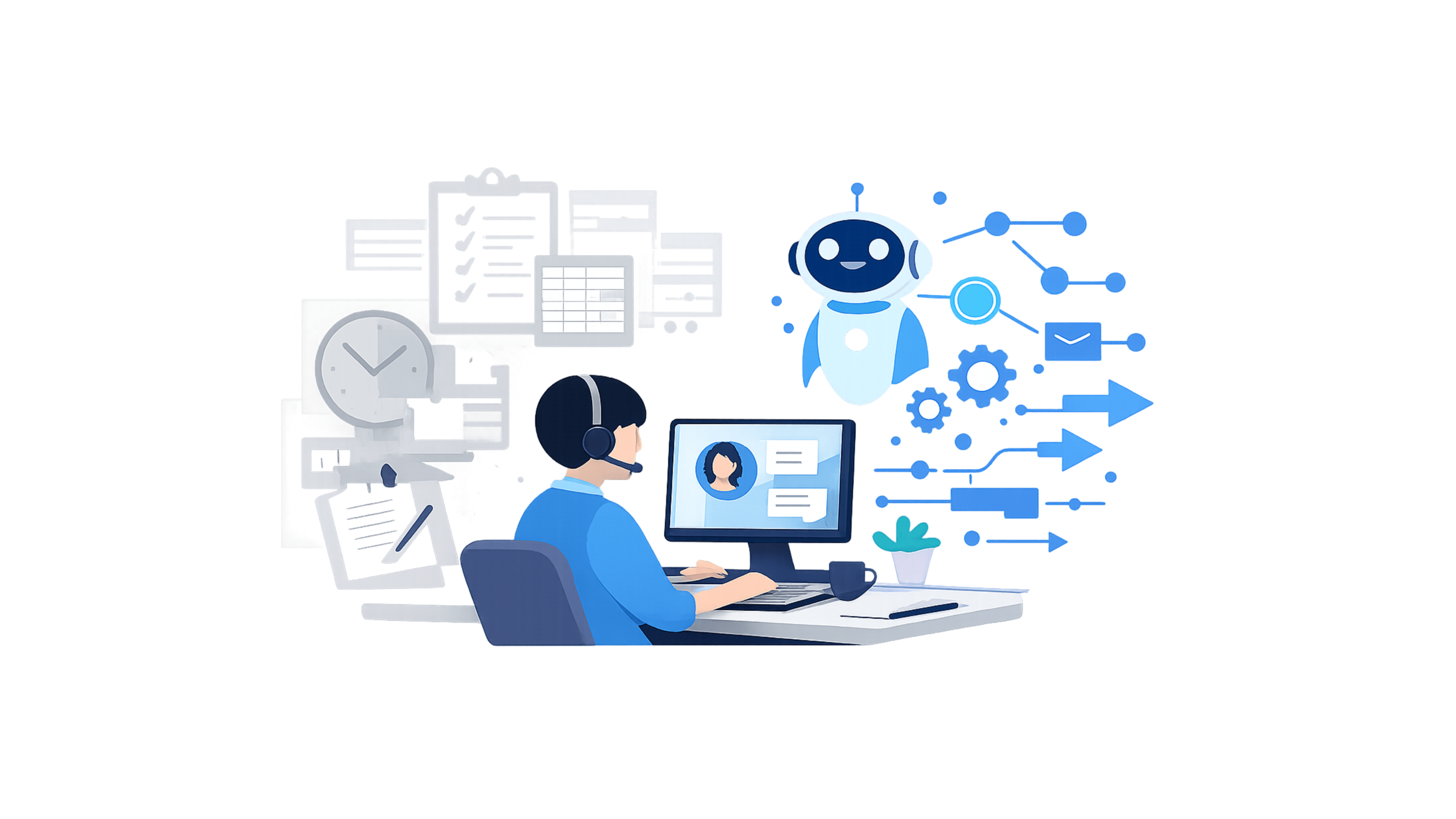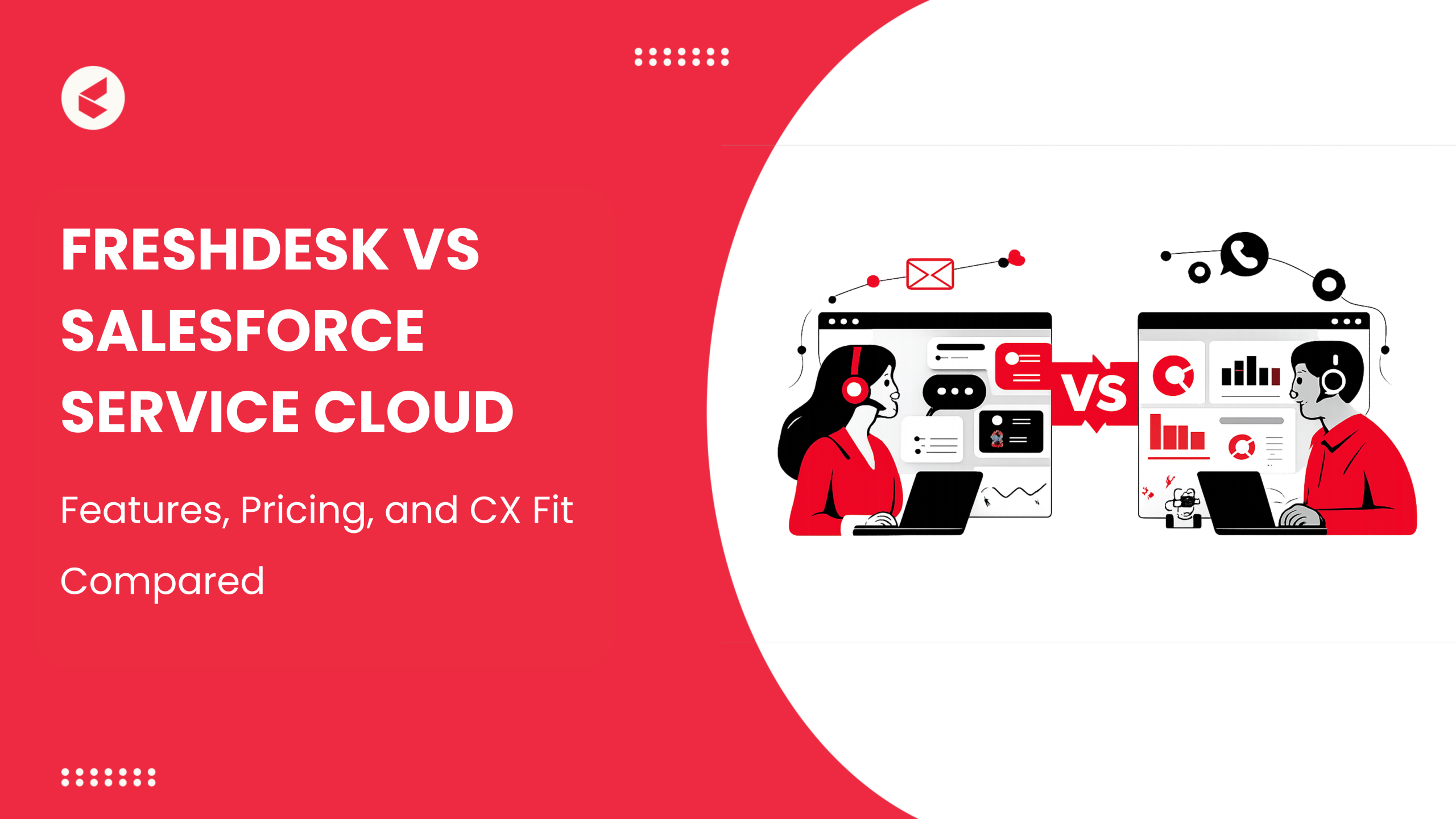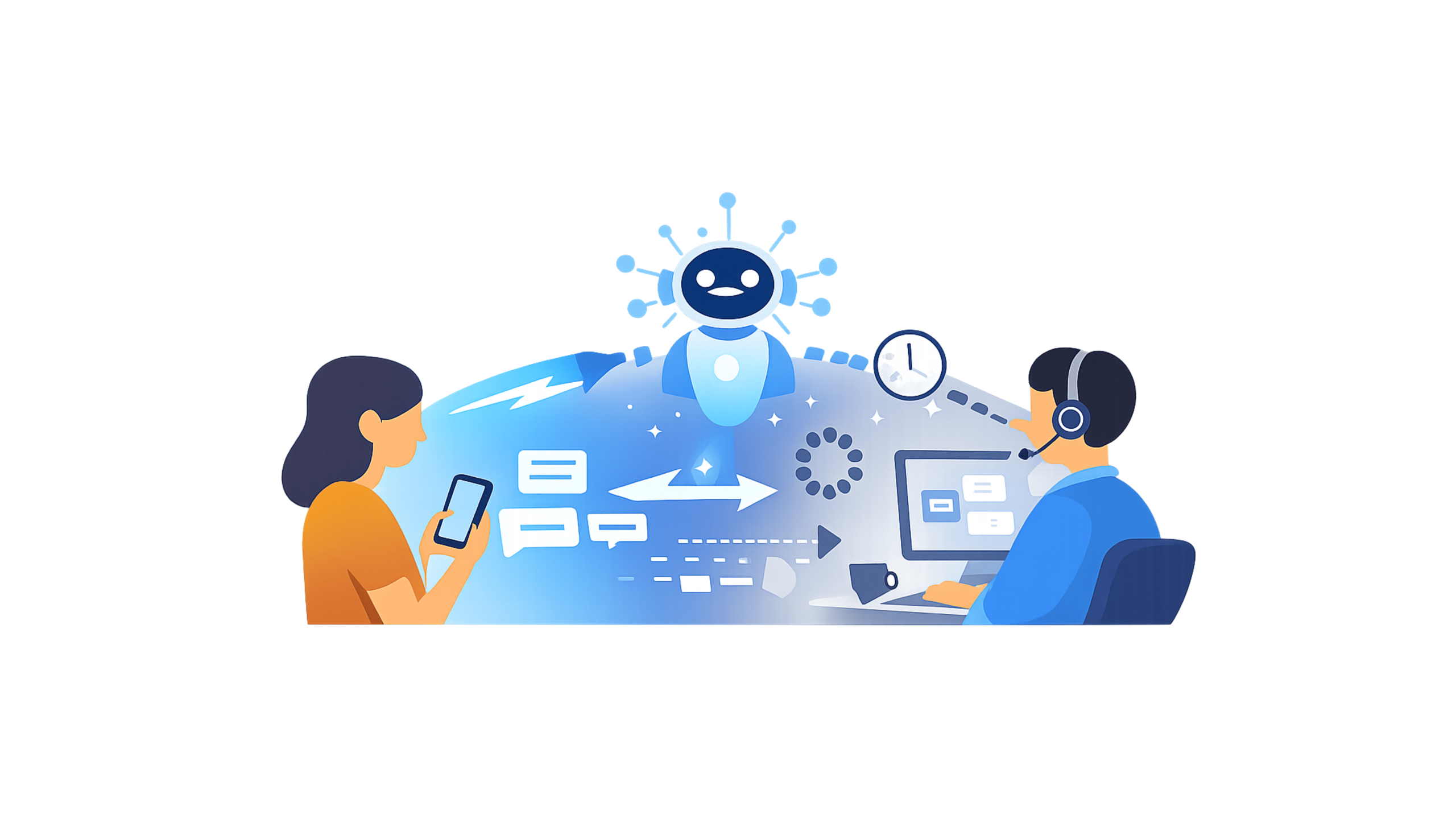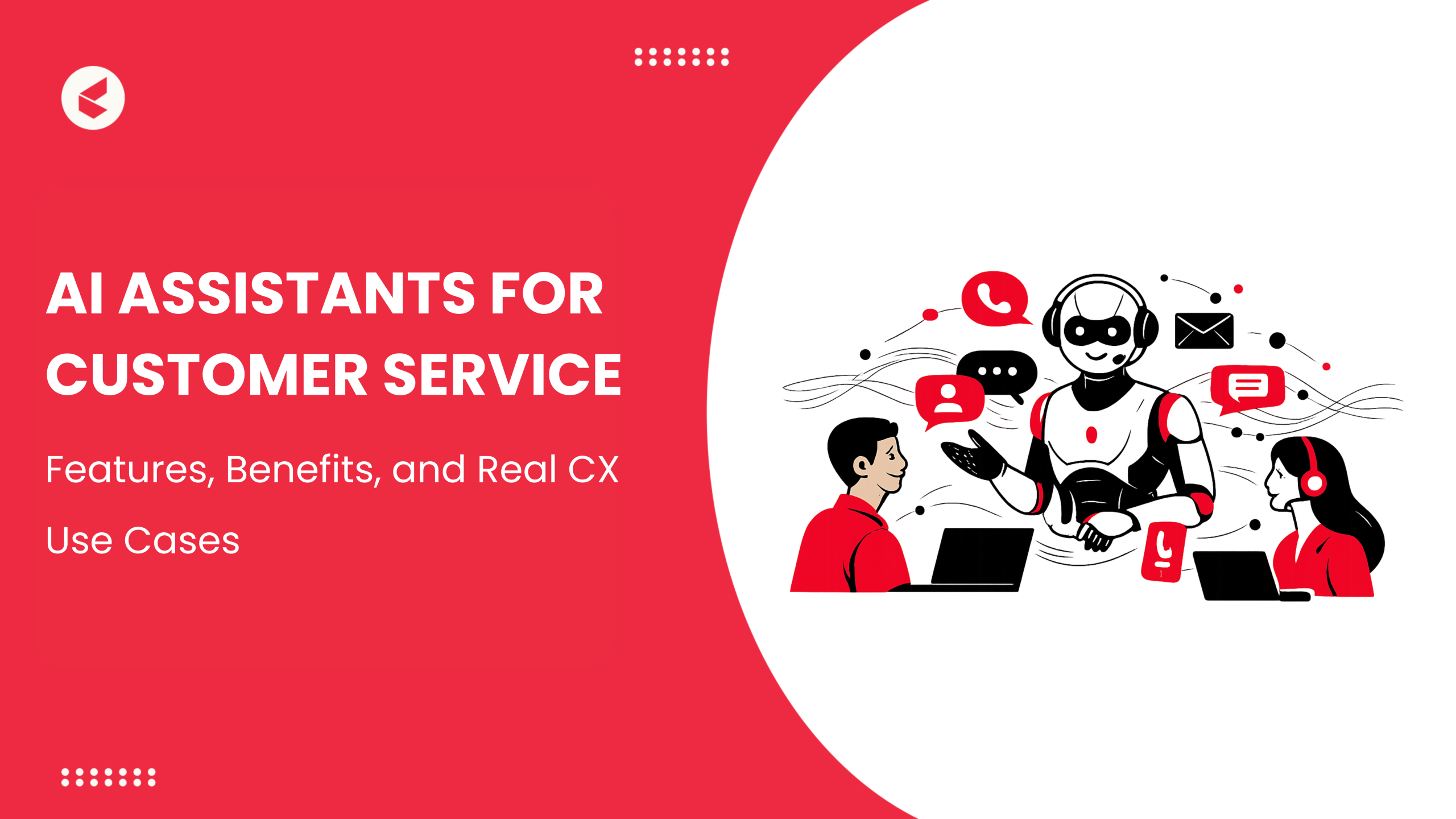“Artificial intelligence would be the ultimate version of Google. The ultimate search engine that would understand everything on the web. It would understand exactly what you wanted, and it would give you the right thing.” – Lawrence Page, CEO, Google
Imagine an AI system that provides you with the exact data you need on your customers to market to them effectively. This AI system would collect data from across touchpoints, analyze it thoroughly, and deliver actionable AI customer insights on which you can formulate your strategies.
Say a customer arrives on the homepage of a website and browses smartphones, and spends more time viewing two specific models. He then spends about two to five minutes reading reviews and leaves the website.
Using an AI system, the company can identify that this customer is interested in smartphones with good cameras. AI will also note the price range of products the customer has browsed. Plus, it will flag that the customer read product reviews without adding anything to the cart, highlighting trust or pricing issues.
AI-powered customer insights can deliver a high level of detail on several customer aspects—behavioral cues, intent signals, and trust indicators in one view.
Your business can also access such deep-level insight at your fingertips with AI customer insights, which is what this blog focuses on. Let’s start!
What Are AI Customer Insights?
AI customer insights are actionable data points extracted by AI-powered software or platforms after a thorough analysis of customer behavior across your channels.
McKinsey reports that in 2024, 78% of organizations were using AI in at least one business function. Many organizations are now using AI marketing tools to generate actionable insights from the vast amounts of first-hand customer data they collect.
For example, AI enables quick analysis of customer feedback. It detects key themes like product utility, quality, and longevity in survey responses. This reveals how your product and brand are perceived, and if there are any areas for improvement.
By assessing customer responses for keywords on product aspects (like quality, utility, longevity, effectiveness, etc.), AI helps you understand how your product was received and the changes customers want to see in its upgraded version.
Enhancing your services and products based on what customers require and demand makes you competitive and retains customers.
Customer information is extensive and varied, which makes it difficult to gather and organize.
AI systems help you collect, organize, store, and recall this data for action points that help you enhance your CX and service. AI makes your data usable.
How AI Transforms Customer Insights?
Statista estimates that approximately 402.74 million terabytes of data are created globally every day. This is the magnitude of the digital footprint generated by internet users, and a lot of it goes to businesses that hold the capacity to utilize it for various purposes (like improving service).
When AI enters the picture, it opens up several avenues for utilizing the massive data that customers generate on a daily basis:
1. Analysis and Pattern Recognition
AI-based customer insight tools can process huge amounts of data in just minutes. This information may come from anywhere, like social media, web interactions, purchases, etc. AI uses this information to identify patterns related to user behavior. This helps companies create user experiences that are more likely to drive conversions and engagement.
Additionally, machine learning algorithms can discover and categorize customers. It checks their geography, demographics, preferences, behavior, etc. to label them. Companies can use this data to customize their experiences and offer pertinent recommendations.
Using predictive analytics, companies can forecast customer trends and prepare special offers and discounts beforehand. Suppose a customer bought a 200ml bottle of body lotion four weeks ago. AI predictive analytics will alert you to the repeat sale potential of the same product. It will simply presume that the customer would have used up the body lotion by now.
2. Personalization and Targeted Experiences
According to StartUps Magazine, AI systems analyze individual customer data and preferences to understand how to personalize the experiences of 9 out of 10 customers. Customer insights like browsing behavior, products viewed, budget brackets, etc., help AI generate relevant recommendations, targeted marketing messages, and customized product offerings.
Additionally, AI provides a critical customer insight called “sentiment analysis” which tells a brand what a customer is potentially feeling about its services or product. This helps brands understand whether its customers are happy, frustrated, or dissatisfied.
3. Service and Support
AI provides intelligent chatbots and conversational support, which also collect customer data from each interaction. Now, this data can be analyzed to understand whether a customer is happy and ready to qualify further into the pipeline.
This analysis also makes it possible to tailor all future interactions with contextual enrichment so that the customer does not have to repeat any detail. Furthermore, AI can identify whether a conversation is taking a positive or negative turn, initiating remedial or soothing strategies beforehand so the situation does not escalate.
Also Read: AI in Customer Service: Your New Frontline Ally
4. Actionable Insight and Decision-Making
AI can use customer data to generate insights that help with product development. For example, by seeking feedback and reviews, AI can collate customer data to extract product highlights that focus on areas of dissatisfaction—that is, where the brand can focus on improving. Therefore, AI-powered customer insights help drive smarter product development decisions.
Key Benefits of AI-Powered Customer Insights
AI-powered customer insights help businesses realize key benefits across all spectra—customer experiences, decision-making, adaptability, competitiveness, and more.
Here are a few key benefits that come from using AI for deriving customer insights:
1. Improved Strategizing
AI generates insights powered by real-world data and uses predictive analytics to extrapolate identified patterns to generate data-backed forecasts. This helps brands prepare effective business strategies in advance to accommodate dynamic customer behavior, changes in trends, demand fluctuations, etc.
2. Cost Reduction
AI-powered workflows automate data collection, categorization, organization, recall, analysis, and update. They reduce the manual workload, eliminating the need for additional manpower to manage customer data. This significantly brings down the operation costs while helping you generate actionable insights that lead to better business decisions.
3. Enhanced Customer Retention
AI-based customer insights tools can analyze customer behavior and look for patterns that lead to cart abandonment, churn, or lack of conversion. AI can label the churning customers by analyzing data like browsing behavior, time spent viewing products, time spent studying brand websites and content, etc. The system then prompts you to trigger retargeting or specific marketing strategies to retain these customers.
Also Read: How Customer Care Chatbots Help Reduce Churn in E-Commerce Businesses
4. Competitive Advantage
AI can discover hidden opportunities by reading between the lines of big data. Machine learning, deep learning, NLP, and other AI technologies allow companies to leverage these new opportunities. They can create new products and services and remain ahead of the competition.
For example, AI can analyze forum threads to understand what people are talking about. This can help them explore new features to add to a product or a direction to innovate.
5. Scalability and Operational Efficiency
AI can collate data from various sources and channels onto a single database, allowing you to scale your operations without limits. Your business can continue seamlessly collecting and processing customer data regardless of how it expands or grows.
AI Technologies Driving Customer Insights
All AI-powered customer insight platforms are built on three pillar technologies: artificial intelligence, machine learning, and natural language processing. Let’s break them down one by one:
1. Artificial Intelligence (AI)
AI is machine-based intelligence that mimics human intelligence on a basic level. Technologies like machine learning, NLP, computer vision, and deep learning allow computers to input, process, and analyze large volumes of data within moments. In the context of customer insight, AI can help in:
- Data collection and integration: AI can be used to automate data integration and collection to minimize the human workload. AI can collect data from customer purchase history, interactions, and loyalty schemes to enable businesses to generate insights.
- Pattern recognition: Your business can identify customer trends, browsing and purchasing behavior, seasonal demands, etc.
- Reporting and visualization: You can present the analyzed data in the form of visuals to make it easy to understand. This includes graphs, charts, dashboards, etc., to help you gain easy access to important insights. You can also use an AI image generator to create clear visual assets that support your reports and presentations.
2. Machine Learning
Machine learning, a subset of AI, gives more power to AI systems and expands their capabilities to extract customer insights from data. It helps with:
- Predictive modeling: These algorithms study customer histories to predict their future shopping behavior. It is also applied to identify customers who will become loyal advocates or those who may churn to competitors. Businesses can adjust their strategies accordingly.
- Customer segmentation: ML can group customers with the same preferences or behaviors into one group, making it easier to target them with personalized content. It also helps businesses create specialized strategies for boosting conversions.
- Recommendation systems: Machine learning systems can learn from past interactions with customers to inform future conversations or strategies. It helps create tailored services and products.
3. Natural Language Processing
NLP is also a subset of AI with unique capabilities that cover different areas of customer insight:
- Sentiment analysis: NLP can analyze customer feedback, reviews, surveys, etc. It identifies the overall “tone” of conversation and reads customer sentiment from it. This helps businesses identify dissatisfaction or issues and act upon them. For instance, NLP can highlight the reviews containing words such as “dissatisfied” or “poor quality” to alert the agents that a customer is dissatisfied.
- Topic modeling: With NLP, you can unearth trending topics or themes from customer dialogues to gather insights on what the customers are discussing most. It assists brands in cashing in on trends and demands. For example, NLP can identify “hydrating skincare” as a trending topic on which brands can capitalize.
- Humanlike Conversations: By using NLP, your brand can offer natural conversations to its customers, analyze interaction data, and generate the subsequent responses. It helps enhance engagement and potentially convert more leads into paying customers.
Challenges in Implementing AI-Based Customer Insights
To effectively extract useful insights from customer data, it is important to consider the following challenges and create a strategy to navigate them:
1. Handling and Using Data
To be able to properly utilize data, you need to focus more on detail and make sure that it is processed appropriately. You will have to confirm that your data is complete with no missing or false information.
Solution: Consider creating a high-quality data bank in advance for your new AI systems. This ensures that the results your AI systems generate resonate with your customer ecosystems.
2. Reliability
AI has inherent challenges in terms of reliability, accuracy, and bias-free results. No AI is 100% accurate.
Solution: Ensure that the data is complete and error-free to ensure accurate results most of the time. Additionally, partner with an AI platform provider that trains models on bias-free datasets using vertical, industry-specific LLMs to ensure that your analytics results are neutral and fair.
3. Compliance Challenges
Different laws and regulations, including GDPR, HIPAA, etc., now govern gathering customer information. In collecting and analyzing customer data, make sure that your storage processes and procedures adhere to all the laws.
Solution: You can implement a secure consent management system to ensure that your data collection process complies with regulatory requirements.
Steps to Implement AI for Customer Insights in Your Business
There are five key steps involved in implementing AI for generating customer insights:
Step 1: Define Goals
Specify the kind of insights you wish to derive from customer data. List the problems you hope to solve with these insights. Identify the major metrics you would utilize to measure the performance and impact of these insights.
For instance, your goal could be to decrease churn, and a major metric to monitor here is the churn rate.
Step 2: Collect and Prepare Data
Now, you need to create a reliable dataset to input into your AI system. Collect data from CRMs, social media, surveys, etc. and make sure to process this data and create a clean, complete dataset for the AI model to use. However, keep the privacy regulations in mind while designing the base data.
Step 3: Choose the Right Platform
The internet has a plethora of AI platforms available to help you extract customer insights. Choose an AI-native platform that integrates easily and provides customer-centric features.
Look for one that helps create engaging experiences, integrates chatbots, derives analytics and insights, etc. Such a platform will make it easier for your business to generate and utilize customer insights easily.
Step 4: Implement, Train, and Monitor
Implement your AI system with help from vendors or independently and start training the AI model with the data you prepared. Monitor how the AI system is responding to your data, and make adjustments to enhance the accuracy and precision. Observe the system performance for some time to ensure that deviations remain minimal.
Step 5: Evaluate, Refine, and Iterate
After a decided timeframe, evaluate the performance of your AI system. Compare your baseline metrics with the new metrics on customer insight. If the improvement is not up to the mark, you may need to tweak your strategies, system configuration, data quality, etc., to achieve the goal. Iterate this process until you get the desired results.
Do More with Your Data
AI equips your business with tools and techniques to understand your customers on a deeper level. Using its analytical capabilities and quick data processing, simplify customer journeys across all your channels. Customer insights help you stay competitive and provide hyper-personalized experiences, improving engagement and retention.
The extent to which your business can capitalize on its data depends on the capability of the AI tool you implement. For all customer-centric intelligence across your enterprise, Kapture CX offers a dedicated, vertical-oriented Insights solution that covers customer feedback into actionable data you can easily put into play.
Kapture CX Insights empowers you with AI tools to:
- Gather feedback, identify trends, patterns, sentiment, and more.
- Take the right action at the right time with a customizable dashboard.
- Create fluid, engaging surveys and leverage any digital channel to reach your customers for their input.
- Access to KPIs and other key metrics to track your progress and measure improvement in tangible, visual terms.
Explore Kapture CX in more detail on the website.
FAQs
AI can process information like purchase history, product affinity, and web interactions to develop a complete view of the customer journey. Such insights enable you to know about customer behavior in minute detail.
Yes, AI customer insights provide you with key information about customers that help reduce churn. This includes analyzing their feedback, interactions, forum interactions, etc., to understand sentiment and develop targeted strategies that help retain them.
AI uses transactional data, behavioral data, demographic data, and feedback data to generate key customer insights.
Indeed, small businesses may leverage low-cost AI-based software to obtain cost-competitive customer insights that drive their growth and improve customer satisfaction. It is able to point out local customers and their preference to improve marketing and outreach.













